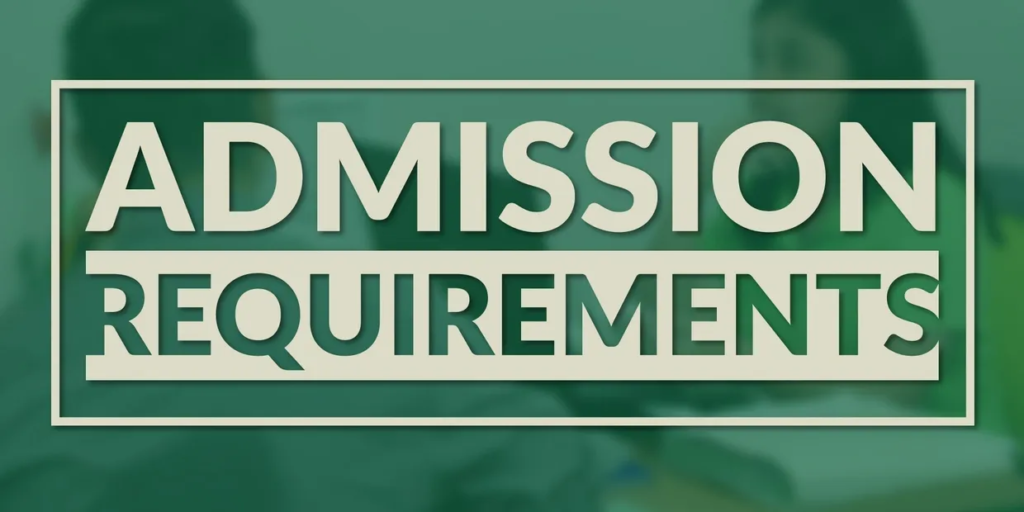Are you curious about the world that opens when you start a Masters in Computer Science in the USA? Pursuing a Master’s in Computer Science from a renowned university in the United States can be a life-changing experience for Indian students. The USA is home to some of the world’s top-ranked institutions, offering cutting-edge curriculum, state-of-the-art facilities, and unparalleled research opportunities in the field of computer science. According to the QS World University Rankings by Subject 2022, seven out of the top ten universities for computer science and information systems are located in the USA. These prestigious institutions attract the brightest minds from around the globe, providing a diverse and intellectually stimulating environment for students.
A for Masters in Computer Science in the USA can open doors to exciting career prospects, both in academic and industry. Graduates often go on to work for leading tech companies, research organizations, or pursue doctoral studies, contributing to the advancement of technology and innovation. In this comprehensive guide, we’ll explore the key factors to consider when choosing a university, admission requirements, financial considerations, visa processes, academic life, and career prospects for Indian students pursuing a Masters in Computer Science in the USA .
Masters in Computer Science in the USA: How to Choose the Best?
When it comes to selecting the right university for your for Masters in Computer Science in the USA , several factors play a crucial role. These include:
Factors to Consider
- Location: The location of the university can significantly impact your overall experience. Consider factors such as cost of living, job opportunities in the area, and cultural diversity.
- Faculty: Research the faculty members in the computer science department. Their expertise, research interests, and industry collaborations can greatly influence the quality of your education.
- Research Opportunities: If you’re interested in pursuing research, evaluate the university’s research facilities, funding opportunities, and collaborations with industry partners.
- Campus Culture: Visit the university’s website or attend virtual events to get a sense of the campus culture. Factors like diversity, student organizations, and recreational facilities can contribute to a well-rounded experience.
Top Universities for Masters in Computer Science in the USA
1. Massachusetts Institute of Technology (MIT)
The Massachusetts Institute of Technology (MIT) is a renowned research university in Cambridge, Massachusetts. Established in 1861, it is acclaimed for its rigorous academic programs and groundbreaking research, particularly in science, engineering, and technology. MIT consistently ranks among the world’s top universities and is known for fostering innovation, entrepreneurship, and a collaborative approach to solving global challenges.

| Detail | Value |
|---|---|
| QS World Ranking (2022) | 1st in Computer Science |
| Acceptance Rate | 6.7% |
| Notable Alumni | Sergey Brin (Google), Amir Husain (SparkCognition), D. Scott Phoenix (HP) |
| Tuition Fees (2022-23) | $53,450 per year |
| Additional Expenses | Around $18,000 per year for living costs |
| Average GRE Scores | Verbal: 162, Quantitative: 167, Analytical Writing: 4.5 |
2. Stanford University
Stanford University, located in Stanford, California, is a prestigious private research university established in 1885. Known for its academic excellence, entrepreneurial spirit, and proximity to Silicon Valley, Stanford excels in a wide range of disciplines, including engineering, business, and humanities. It consistently ranks among the top universities globally and is renowned for its innovation and research contributions.

| Detail | Value |
|---|---|
| QS World Ranking (2022) | 2nd in Computer Science |
| Acceptance Rate | 4.4% |
| Notable Alumni | Vinod Khosla (Sun Microsystems), Sergey Brin (Google), Larry Page (Google) |
| Tuition Fees (2022-23) | $56,169 per year |
| Additional Expenses | Around $35,000 per year for living costs |
| Average GRE Scores | Verbal: 164, Quantitative: 167, Analytical Writing: 4.2 |
3. University of California, Berkeley
The University of California, Berkeley (UC Berkeley) is a prestigious public research university founded in 1868. Located in Berkeley, California, it is renowned for its rigorous academic programs, particularly in engineering, computer science, and the sciences. UC Berkeley is known for its influential research, vibrant campus culture, and commitment to public service, consistently ranking among the top public universities in the world.

| Detail | Value |
|---|---|
| QS World Ranking (2022) | 5th in Computer Science |
| Acceptance Rate | 16.8% |
| Notable Alumni | Eric Schmidt (Google), Steve Wozniak (Apple), Gordon Moore (Intel) |
| Tuition Fees (2022-23) | $29,000 per year (in-state), $53,000 per year (out-of-state) |
| Additional Expenses | Around $34,000 per year for living costs |
| Average GRE Scores | Verbal: 160, Quantitative: 167, Analytical Writing: 4.2 |
4. Carnegie Mellon University
Carnegie Mellon University (CMU) is a leading private research university located in Pittsburgh, Pennsylvania. Founded in 1900, it is renowned for its programs in computer science, engineering, and the arts. CMU is recognized for its interdisciplinary approach, innovative research, and strong emphasis on practical applications, consistently ranking among the top universities globally.

| Detail | Value |
|---|---|
| QS World Ranking (2022) | 6th in Computer Science |
| Acceptance Rate | 21.5% |
| Notable Alumni | Aditya Khosla (Google Brain), Telle Whitney (Anita Borg Institute), Kurt Stam (Apple) |
| Tuition Fees (2022-23) | $57,510 per year |
| Additional Expenses | Around $20,000 per year for living costs |
| Average GRE Scores | Verbal: 160, Quantitative: 167, Analytical Writing: 4.5 |
Masters in Computer Science in USA requirements
Gaining admission to a top-ranked university for a Master’s in Computer Science can be highly competitive. Here are some common requirements and tips for Indian students:

- Bachelor’s Degree Prerequisites Most universities require a four-year Bachelor’s degree in Computer Science, Information Technology, or a closely related field from an accredited institution. A minimum GPA of 3.0 (on a 4.0 scale) or equivalent is generally expected, though higher GPAs may be required for top programs.
- English Language Proficiency As instruction is in English, international students must demonstrate proficiency in the language. Common tests accepted include TOEFL (minimum scores around 90-100), IELTS (minimum band score of 7.0), or PTE Academic (minimum score of 65).
- GRE/GMAT Scores The Graduate Record Examination (GRE) is a standard requirement for most Computer Science programs in the USA. Top universities typically expect scores above the 90th percentile in the Quantitative section. Some universities may also accept GMAT scores.
- Work Experience While not always mandatory, relevant work experience in the field of computer science can strengthen your application. Internships, research projects, or professional roles demonstrating technical skills and problem-solving abilities are valuable.
Documentation Checklist
- Transcripts from all academic institutions attended
- Statement of Purpose (highlighting your academic interests and goals)
- Letters of Recommendation (usually 2-3, from professors or employers)
- Resume/CV
- Portfolio (for showcasing relevant projects or research work)
- Application fees (typically ranging from $50 to $100)
Application Tips
- Start the application process early (at least 9-12 months before the intended start date)
- Tailor your Statement of Purpose and other documents to each university
- Highlight any research experience, publications, or relevant projects
- Seek guidance from seniors, professors, or educational consultants
- Apply to multiple universities to increase your chances of admission
Frustrated with Generic College Lists from AI Tools?
Get a tailored college shortlist crafted by study abroad experts who understand YOUR goals, profile, and aspirations.

Student Visa Application Process
International students pursuing a Master’s degree in the USA will need to obtain a student visa. The most common type is the F-1 visa, which allows you to study full-time in the country.
Types of Visa
- F-1 Student Visa: For full-time students enrolled in an academic program
- J-1 Exchange Visitor Visa: For exchange visitors participating in programs approved by the U.S. Department of State
Key Steps
- Receive your I-20 form (Certificate of Eligibility for Nonimmigrant Student Status) from the university.
- Pay the SEVIS I-901 fee (Student and Exchange Visitor Information System).
- Complete the DS-160 Online Nonimmigrant Visa Application form.
- Schedule and attend the visa interview at the nearest U.S. Embassy or Consulate.
- Provide required documentation (I-20, financial evidence, academic records, etc.).
- Upon approval, your passport will be stamped with the student visa.
Documents Required
- Passport (valid for at least six months beyond the intended period of stay)
- I-20 form from the university
- SEVIS I-901 fee payment receipt
- Proof of financial support (bank statements, scholarship letters, etc.)
- Academic transcripts and standardized test scores
- Supplementary documents (resume, portfolio, etc.)
Tips for a Successful Visa Interview
- Dress professionally and arrive early for the interview.
- Be honest, confident, and clear in your responses.
- Demonstrate strong ties to your home country (family, assets, etc.).
- Explain your academic and career goals clearly.
- Provide evidence of financial support and sources of funding.
- Carry all required documents and be prepared to answer questions about your application.
MS in Computer Science in USA fees
Pursuing a Master’s in Computer Science at a top university in the USA can be a significant investment. It’s essential to plan your finances carefully and explore various funding options available to international students.
Tuition Fees
| University | Tuition Fees |
|---|---|
| Massachusetts Institute of Technology (MIT) | $53,450 per year |
| Stanford University | $56,169 per year |
| University of California, Berkeley | $29,000 per year (in-state) $53,000 per year (out-of-state) |
| Carnegie Mellon University | $57,510 per year |
Living Expenses
| University | Estimated Living Expenses |
|---|---|
| Massachusetts Institute of Technology (MIT) | Around $18,000 per year |
| Stanford University | Around $35,000 per year |
| University of California, Berkeley | Around $34,000 per year |
| Carnegie Mellon University | Around $20,000 per year |
MS in Computer Science in USA with scholarship
International students can explore various scholarship opportunities to help finance their studies. Many universities offer merit-based and need-based scholarships to eligible students. Additionally, external organizations, government agencies, and private foundations in India and the U.S. may provide scholarships or fellowships for study abroad programs.
Some examples of scholarship opportunities include:
- University-specific scholarships (e.g., MIT Presidential Fellowship, Stanford Knight-Hennessy Scholars Program)
- External scholarships (e.g., Fulbright Foreign Student Program, Inlaks Shivdasani Foundation Scholarships)
- Government scholarships (e.g., ICCR Scholarships, GAIL Scholars Program)
Funding Tips
Here are some tips to help Indian students fund their Master’s in Computer Science in the USA:
- Apply for scholarships and fellowships well in advance, as the application process can be competitive and time-consuming.
- Explore teaching assistantships, research assistantships, or on-campus employment opportunities offered by the university.
- Consider taking out educational loans from banks or financial institutions in India or the U.S. (e.g., Prodigy Finance, Credila, HDFC Credila, etc.).
- Build a strong financial plan and budget carefully to manage expenses effectively.
- Seek guidance from educational consultants or alumni networks for additional funding resources and strategies.

MS in Computer Science in USA for Indian students
Pursuing an MS in Computer Science in the USA is a transformative experience for Indian students, offering world-class education, access to groundbreaking research, and unparalleled career opportunities. With the USA housing some of the world’s top-ranked universities, the program prepares students to excel in fields like artificial intelligence, data science, cybersecurity, and software engineering. Below is an in-depth overview of what Indian students can expect from an MS in Computer Science in the USA:
Coursework and Curriculum
The MS in Computer Science in the USA offers a dynamic and flexible curriculum tailored to meet diverse career goals.
- Core Courses: Cover foundational topics like Algorithms, Data Structures, Operating Systems, Computer Architecture, and Programming Languages.
- Electives: Specialize in advanced fields such as Artificial Intelligence, Machine Learning, Cybersecurity, Cloud Computing, and Big Data Analytics.
- Degree Tracks: Students can choose from:
- Coursework-Only Program: Typically 30-36 credits focusing on advanced coursework.
- Research-Based Program: Includes 20-24 credits of coursework combined with a thesis or capstone project.
- Duration: The program usually spans 1 to 2 years, depending on the university and selected track.
Renowned universities like MIT, Stanford, Carnegie Mellon, and UC Berkeley lead the way in offering comprehensive and industry-aligned curricula for MS in Computer Science in the USA.
Research Opportunities
The USA is a global leader in computer science research, with universities heavily funded by government agencies and tech giants.
- Students can engage in cutting-edge research projects under the mentorship of globally recognized faculty.
- Opportunities include publishing research papers, attending global conferences, and contributing to pioneering projects in fields such as AI, Quantum Computing, and Blockchain Technology.
- According to the National Science Foundation (NSF), top institutions like MIT, Stanford, and Carnegie Mellon University each received over $100 million in research funding in recent years.
Research experience during an MS in Computer Science in the USA not only enhances knowledge but also strengthens prospects for Ph.D. admissions or industry research roles.
Balancing Academics and Part-Time Jobs
International students, including those from India, can balance their academic workload with part-time employment opportunities:
- On-Campus Jobs: F-1 visa holders can work up to 20 hours per week during academic terms. Roles often include research assistantships, teaching assistantships, or campus administrative jobs.
- Curricular Practical Training (CPT): During summer or semester breaks, students can gain hands-on industry experience through CPT-authorized internships in tech firms.
- Optional Practical Training (OPT): After graduation, students can work in the USA for up to 3 years (for STEM-designated programs like Computer Science).
These work opportunities significantly help students manage tuition and living expenses while gaining professional experience.
Networking and Extracurricular Activities
The MS in Computer Science in the USA is more than just academics; it’s about building connections and professional growth:
- Career Fairs and Industry Events: Universities host frequent career fairs and tech talks where students can interact with recruiters from Google, Microsoft, Amazon, and Facebook.
- Student Organizations: Joining CS clubs, AI societies, and tech innovation groups allows students to collaborate on projects, build leadership skills, and network with peers.
- Hackathons and Competitions: Many universities host annual hackathons, providing students with practical exposure and a chance to showcase their skills.
Networking in the USA is crucial, as strong professional connections often translate into internship and job opportunities.
Potential Career Paths after MS in Computer Science in the USA
Graduates from an MS in Computer Science in the USA have access to diverse and high-paying career opportunities:
- Software Developer/Engineer
- Data Scientist/Analyst
- AI and Machine Learning Specialist
- Cybersecurity Expert
- Cloud Solutions Architect
- Research and Development (R&D) Professional
- Academic Career (Ph.D. or Teaching Positions)
The average starting salary for MSCS graduates in the USA is approximately $100,000 – $130,000 per year, depending on location and job role.
MCQ
Conclusion
Pursuing a for Masters in Computer Science in the USA from a prestigious university can be a transformative experience that unlocks career prospects and personal growth. By carefully considering factors like university rankings, program offerings, admission requirements, and financial aid opportunities, Indian students can make an informed decision aligned with their goals. Embracing the challenges of being an international student, while taking advantage of the diverse academic environments and cutting-edge research facilities, can equip you with the skills and knowledge to thrive in the dynamic field of computer science.




